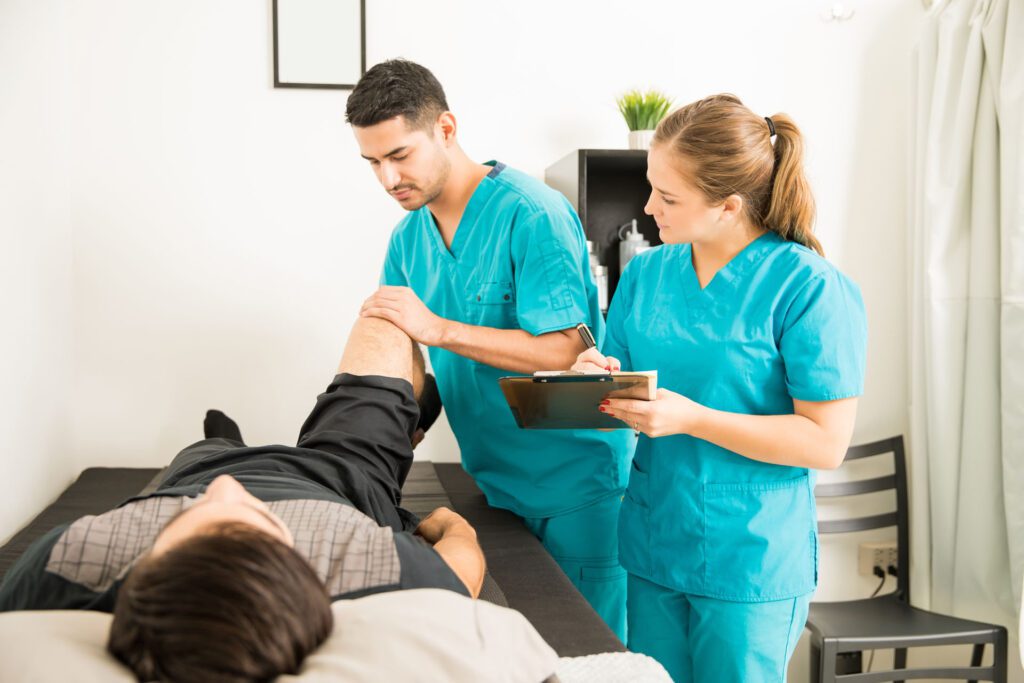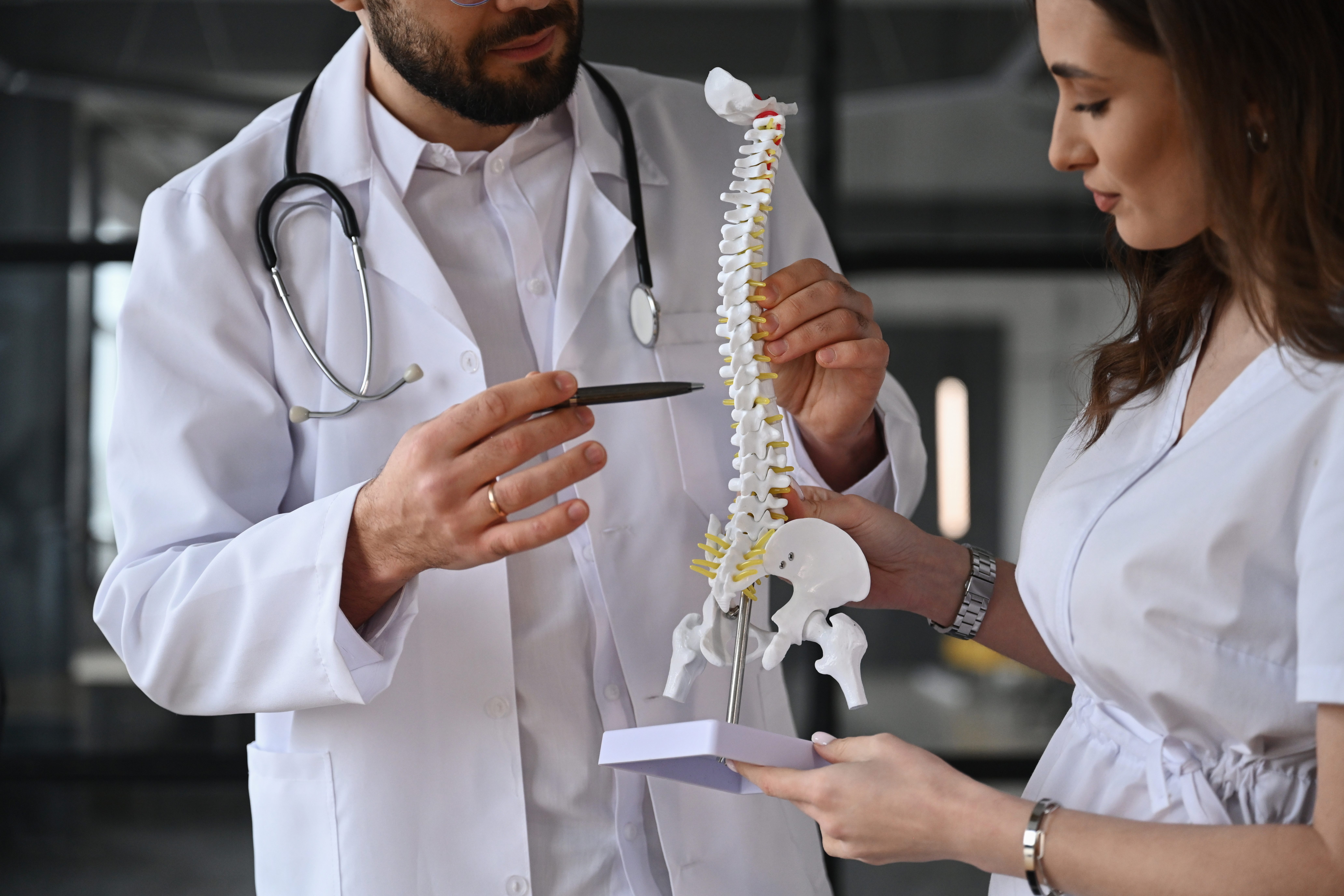Oxidative Stress Effects Revealed in The Musculoskeletal System
Discover the role of oxidative stress in the musculoskeletal system and its implications for physical health.
Chiropractic Care: A Holistic Approach to Reducing Oxidative Stress and Supporting Musculoskeletal Health
Welcome, dear reader, to a lively exploration of health and wellness, where we’ll dive into the mysterious world of oxidative stress and its effects on your musculoskeletal system—think of it as a spirited tango led by Gomez Addams, full of passion and purpose! In this comprehensive guide, we’ll uncover how chiropractic care, spearheaded by the distinguished Dr. Alexander Jimenez, DC, APRN, FNP-BC, at ChiroMed – Integrated Medicine in El Paso, TX, can help tame the wild beast of oxidative stress and restore harmony to your body. We’ll weave through the science, sprinkle in practical tips, and spotlight Dr. Jimenez’s expertise in personal injury cases, all with a touch of Addams Family flair to keep things delightfully engaging. Let’s step onto the dance floor of health!
Understanding Oxidative Stress: When Your Cells Lose Their Rhythm
Imagine your body as a grand ballroom, with your cells performing a perfectly choreographed dance to keep you vibrant and healthy. Oxidative stress is like an uninvited guest—let’s call it Cousin Itt—crashing the party and throwing everyone off beat. Scientifically, oxidative stress occurs when there’s an imbalance between free radicals (unstable molecules with unpaired electrons) and antioxidants (the body’s peacekeepers that neutralize them). These free radicals, produced during normal metabolism or triggered by external factors like pollution, can damage cells, proteins, and DNA if not properly managed (Sies, 2015).
In the musculoskeletal system—your body’s framework of bones, muscles, tendons, ligaments, and joints—oxidative stress is like Gomez tripping over a loose floorboard, causing inflammation, tissue damage, and pain. This can lead to conditions like arthritis, muscle fatigue, and delayed recovery from injuries, making it a key player in musculoskeletal chaos (Health Coach Clinic, 2021).
Acute vs. Chronic Oxidative Stress: A Tale of Two Dances
- Acute Oxidative Stress: Picture this as a brief, dramatic flare-up, like Gomez accidentally setting off fireworks during a family gathering. It’s a short-term response to intense exercise, an injury, or a sudden environmental insult (e.g., a day in the scorching El Paso sun without sunscreen). Acute oxidative stress is temporary, and with rest, nutrition, and proper care, your body’s antioxidant defenses can restore order (Sies, 2015). For instance, a sprained ankle from an overzealous fencing match with Gomez might cause localized oxidative stress, leading to swelling and pain that subsides with treatment.
- Chronic Oxidative Stress: This is the slow, simmering chaos, like Gomez brooding over a never-ending family feud. Chronic oxidative stress stems from prolonged exposure to stressors like poor diet, smoking, or untreated injuries, leading to persistent inflammation and tissue degeneration. It’s linked to chronic conditions like osteoarthritis, fibromyalgia, and accelerated aging of musculoskeletal tissues, making your joints creak like the Addams Family mansion’s old staircase (Liguori et al., 2018).
References
- Sies, H. (2015). Oxidative stress: A concept in redox biology and medicine. Redox Biology, 4, 180–183. https://pubmed.ncbi.nlm.nih.gov/26798425/
- Liguori, I., Russo, G., Curcio, F., Bulli, G., Aran, L., Della-Morte, D., Gargiulo, G., Testa, G., Cacciatore, F., Bonaduce, D., & Abete, P. (2018). Oxidative stress, aging, and diseases. Clinical Interventions in Aging, 13, 757–772. https://pubmed.ncbi.nlm.nih.gov/29731617/
- Health Coach Clinic. (2021). Health & wellness: Oxidative stress. https://healthcoach.clinic/health-wellness-oxidative-stress/
Factors Fueling Oxidative Stress in the Musculoskeletal System
Oxidative stress doesn’t just waltz into your musculoskeletal system uninvited—it’s lured in by a cast of mischievous culprits, each adding their own twist to the plot. Let’s meet the rogues’ gallery, as colorful as the Addams Family’s eccentric relatives:
- Poor Diet: A diet lacking antioxidants (think fruits, vegetables, and whole grains) and heavy on processed foods is like serving Gomez a dull, tasteless meal—utterly disastrous! Nutrient deficiencies weaken the body’s ability to neutralize free radicals, leading to oxidative damage in muscles and joints (Calder et al., 2017).
- Physical Overexertion: Overdoing it at the gym or during a passionate Addams-style fencing duel can spike free radical production, especially in muscles. Intense exercise without adequate recovery overwhelms antioxidant defenses, causing muscle fatigue and soreness (Powers & Jackson, 2008).
- Environmental Toxins: Pollution, UV radiation, and the relentless El Paso heat can generate free radicals, stressing your musculoskeletal tissues like Gomez fretting over a misplaced cigar (Finkel & Holbrook, 2000).
- Chronic Inflammation: Conditions like rheumatoid arthritis or repetitive strain injuries keep inflammation simmering, fueling oxidative stress. It’s a vicious cycle, like Gomez and Fester arguing over who gets the last dance (Mittal et al., 2014).
- Gut Dysbiosis: An imbalanced gut microbiome can trigger systemic inflammation, amplifying oxidative stress and affecting muscles and joints. Think of it as the gut throwing a tantrum that disrupts the entire Addams household (Carding et al., 2015).
- Stress and Poor Sleep: Chronic stress and sleepless nights increase cortisol and free radical production, weakening musculoskeletal resilience. It’s like Gomez staying up all night worrying about Lurch’s piano skills (Hirotsu et al., 2015).
- Personal Injuries: Trauma from car accidents, workplace mishaps, or slips can cause acute oxidative stress, which, if untreated, may become chronic, delaying recovery and intensifying pain (Jimenez, 2024).
References
- Calder, P. C., Bosco, N., Bourdet-Sicard, R., Capuron, L., Delzenne, N., Doré, J., Franceschi, C., Lehtinen, M. J., Recker, T., Salvioli, S., & Visioli, F. (2017). Health relevance of the modification of low-grade inflammation in ageing (inflammaging) and the role of nutrition. Ageing Research Reviews, 40, 95–119. https://pubmed.ncbi.nlm.nih.gov/28899766/
- Powers, S. K., & Jackson, M. J. (2008). Exercise-induced oxidative stress: Cellular mechanisms and impact on muscle force production. Physiological Reviews, 88(4), 1243–1276. https://pubmed.ncbi.nlm.nih.gov/18923182/
- Finkel, T., & Holbrook, N. J. (2000). Oxidants, oxidative stress and the biology of ageing. Nature, 408(6809), 239–247. https://pubmed.ncbi.nlm.nih.gov/11089981/
- Mittal, M., Siddiqui, M. R., Tran, K., Reddy, S. P., & Malik, A. B. (2014). Reactive oxygen species in inflammation and tissue injury. Antioxidants & Redox Signaling, 20(7), 1126–1167. https://pubmed.ncbi.nlm.nih.gov/23992188/
- Carding, S., Verbeke, K., Vipond, D. T., Corfe, B. M., & Owen, L. J. (2015). Dysbiosis of the gut microbiota in disease. Microbial Ecology in Health and Disease, 26, 26191. https://pubmed.ncbi.nlm.nih.gov/25651997/
- Hirotsu, C., Tufik, S., & Andersen, M. L. (2015). Interactions between sleep, stress, and metabolism: From physiological to pathological conditions. Sleep Science, 8(3), 143–152. https://pubmed.ncbi.nlm.nih.gov/26779320/
- Jimenez, A. (2024). El Paso Chiropractor | Injury Medical & Chiropractic Clinic. https://dralexjimenez.com/
The Musculoskeletal System: The Body’s Framework Under Siege
Your musculoskeletal system is like the Addams Family mansion—strong, intricate, and full of character, but vulnerable to wear and tear. It includes bones, muscles, tendons, ligaments, and joints, all working together to support movement, maintain posture, and protect vital organs. When oxidative stress sneaks in, it’s like termites gnawing at the mansion’s foundation, causing:
- Muscle Damage: Free radicals impair muscle repair, leading to weakness and fatigue, especially after injuries or intense activity. It’s like Gomez straining a muscle during an overly enthusiastic tango (Powers & Jackson, 2008).
- Joint Degeneration: Oxidative stress fuels inflammation in joints, contributing to conditions like osteoarthritis, where cartilage breaks down, causing pain and stiffness as jarring as a creaky mansion door (Lepetsos & Papavassiliou, 2016).
- Bone Weakness: Oxidative stress disrupts bone remodeling, increasing the risk of osteoporosis or fractures, making bones as brittle as Gomez’s old fencing foils (Wauquier et al., 2009).
- Pain Amplification: Chronic oxidative stress heightens pain sensitivity by activating inflammatory pathways, making minor injuries feel like a dramatic Addams Family showdown (Mittal et al., 2014).
References
- Lepetsos, P., & Papavassiliou, A. G. (2016). ROS/oxidative stress signaling in osteoarthritis. Biochimica et Biophysica Acta (BBA) – Molecular Basis of Disease, 1862(4), 576–591. https://pubmed.ncbi.nlm.nih.gov/26769361/
- Wauquier, F., Legeay, O., Guicheux, J., & Wittrant, Y. (2009). Oxidative stress in bone remodelling and disease. Trends in Molecular Medicine, 15(10), 468–477. https://pubmed.ncbi.nlm.nih.gov/19786332/
- Powers, S. K., & Jackson, M. J. (2008). Exercise-induced oxidative stress: Cellular mechanisms and impact on muscle force production. Physiological Reviews, 88(4), 1243–1276. https://pubmed.ncbi.nlm.nih.gov/18923182/
- Mittal, M., Siddiqui, M. R., Tran, K., Reddy, S. P., & Malik, A. B. (2014). Reactive oxygen species in inflammation and tissue injury. Antioxidants & Redox Signaling, 20(7), 1126–1167. https://pubmed.ncbi.nlm.nih.gov/23992188/
Chiropractic Care: Restoring Balance Like Gomez’s Perfect Tango
Chiropractic care, as practiced by Dr. Alexander Jimenez at ChiroMed – Integrated Medicine, is like Gomez leading a flawless dance to restore harmony to the body. It focuses on aligning the spine and joints to optimize nervous system function, reduce inflammation, and promote healing—all without surgery. Here’s how chiropractic care tackles oxidative stress and its musculoskeletal effects:
- Spinal Adjustments: Misalignments (subluxations) can disrupt nerve signals, increasing stress and inflammation. Chiropractic adjustments realign the spine, improving blood flow and reducing oxidative stress in affected tissues, much like Gomez straightening a crooked family portrait (Cleveland Clinic, 2023).
- Reducing Inflammation: By correcting biomechanical dysfunctions, chiropractic care lowers inflammatory markers linked to oxidative stress, easing pain in conditions like sciatica or arthritis (Anderson et al., 2024).
- Enhancing Recovery: Adjustments improve joint mobility and muscle function, speeding recovery from injuries that cause acute oxidative stress, such as whiplash or sports sprains (Jimenez, 2024).
- Holistic Integration: Dr. Jimenez’s dual expertise as a chiropractor and nurse practitioner allows him to combine spinal adjustments with functional medicine, addressing systemic factors like gut health or nutrition that contribute to oxidative stress (Jimenez, 2021).
References
- Cleveland Clinic. (2023). Chiropractic adjustment care, treatment & benefits. https://my.clevelandclinic.org/health/treatments/21033-chiropractic-adjustment
- Anderson, B. R., McClellan, W. S., & Long, C. R. (2024). Cost of chiropractic versus medical management of adults with spine-related musculoskeletal pain: A systematic review. Journal of Manipulative and Physiological Therapeutics, 44(9), 683–689. https://www.researchgate.net/publication/369060054_Cost_of_chiropractic_versus_medical_management_of_adults_with_spine-related_musculoskeletal_pain_a_systematic_review
- Jimenez, A. (2021). The functional medicine approach. https://dralexjimenez.com/functional-medicine-approach-2021/
- Jimenez, A. (2024). El Paso Chiropractor | Injury Medical & Chiropractic Clinic. https://dralexjimenez.com/
Non-Surgical Treatments: A Team Effort to Tame Oxidative Stress
At ChiroMed, Dr. Jimenez orchestrates a symphony of non-surgical treatments that work together like the Addams Family planning a grand gala. These integrative approaches complement chiropractic care to reduce oxidative stress and support musculoskeletal health:
- Rehabilitation: Targeted exercises strengthen muscles and improve joint stability, reducing oxidative stress by enhancing tissue resilience. It’s like training Lurch to lift heavy objects without straining (Jimenez, 2025).
- Nutrition Counseling: Antioxidant-rich diets (e.g., berries, leafy greens, nuts) combat free radicals, supporting musculoskeletal health. Dr. Jimenez tailors plans to address deficiencies linked to oxidative stress, ensuring your body is as fortified as the Addams mansion (Calder et al., 2017).
- Acupuncture: This ancient practice reduces pain and inflammation, potentially lowering oxidative stress by improving blood flow and calming the nervous system. It’s like Gomez finding zen in a moonlit meditation (Vickers & Zollman, 1999).
- Naturopathy: Herbal supplements and lifestyle changes boost antioxidant defenses, complementing chiropractic care to reduce systemic stress. Think of it as Morticia’s herbal remedies for the family’s ailments (Pizzorno, 2015).
- Massage Therapy: By relieving muscle tension and improving circulation, massage reduces inflammation and oxidative stress, aiding recovery like a soothing Addams Family lullaby (Field, 2014).
These treatments form a cohesive strategy to address the root causes of oxidative stress, ensuring your musculoskeletal system stays as resilient as Gomez’s love for Morticia.
References
- Vickers, A., & Zollman, C. (1999). Acupuncture. BMJ, 319(7215), 973–976. https://pubmed.ncbi.nlm.nih.gov/10514159/
- Pizzorno, J. E. (2015). The role of naturopathic medicine in integrative care. Integrative Medicine: A Clinician’s Journal, 14(5), 34–39. https://pubmed.ncbi.nlm.nih.gov/26770161/
- Field, T. (2014). Massage therapy research review. Complementary Therapies in Clinical Practice, 20(4), 224–229. https://pubmed.ncbi.nlm.nih.gov/25172313/
- Calder, P. C., et al. (2017). Health relevance of the modification of low-grade inflammation in ageing (inflammaging) and the role of nutrition. Ageing Research Reviews, 40, 95–119. https://pubmed.ncbi.nlm.nih.gov/28899766/
- Jimenez, A. (2025). Rehabilitation with Dr. Jimenez: Comprehensive recovery solutions. https://www.elpasochiropractorblog.com/
Home Exercises for Pain Relief- Video
Dr. Alexander Jimenez: El Paso’s Champion for Personal Injury Cases
In El Paso, personal injuries from car accidents, workplace mishaps, or slips are as common as Gomez’s enthusiastic fencing bouts. Dr. Alexander Jimenez stands out as a beacon of hope for victims, offering a unique blend of chiropractic expertise and nurse practitioner skills at ChiroMed – Integrated Medicine (https://chiromed.com/). His practice is a sanctuary for those seeking non-surgical recovery from injuries that fuel oxidative stress and pain.
Advanced Imaging and Diagnostic Evaluations
Dr. Jimenez uses state-of-the-art imaging, such as X-rays and MRIs, to pinpoint the source of injuries, whether it’s a herniated disc, soft tissue damage, or a stress fracture. These diagnostics ensure precise treatment plans, avoiding the guesswork that could make recovery as unpredictable as Gomez’s experiments with dynamite (Jimenez, 2025). For example, advanced imaging can reveal how a car accident caused spinal misalignments that contribute to oxidative stress and pain.
Dual-Scope Procedures
With his dual licensure as a chiropractor and nurse practitioner, Dr. Jimenez employs a “dual-scope” approach, blending chiropractic adjustments with medical diagnostics. For instance, a patient with whiplash might receive spinal adjustments to correct misalignments, alongside blood panels to check for inflammation markers linked to oxidative stress. This comprehensive care speeds recovery and reduces long-term complications, ensuring patients feel as rejuvenated as Gomez after a moonlit dance (Jimenez, 2024).
Legal-Medical Liaison
Personal injury cases often require meticulous documentation for legal claims. Dr. Jimenez excels as a liaison, providing detailed reports that bridge medical findings with legal needs. His expertise ensures injuries are accurately documented, supporting victims in securing fair compensation while focusing on healing. It’s like Gomez meticulously cataloging the family’s haunted artifacts to preserve their legacy (Jimenez, 2025).
References
- Jimenez, A. (2024). LinkedIn profile. https://www.linkedin.com/in/dralexjimenez/
- Jimenez, A. (2025). Rehabilitation with Dr. Jimenez: Comprehensive recovery solutions. https://www.elpasochiropractorblog.com/
Small Changes for Big Impact: Clinical Insights from Dr. Jimenez
Dr. Jimenez’s philosophy is all about empowering patients with practical, everyday changes to combat oxidative stress and support musculoskeletal health. These tips are as lively as Gomez reciting poetry under the moonlight:
- Eat the Rainbow: Incorporate colorful fruits and vegetables (e.g., blueberries, spinach, carrots) to boost antioxidants. It’s like decorating the Addams mansion with vibrant colors to keep it lively (Calder et al., 2017).
- Move Mindfully: Engage in low-impact exercises like yoga, swimming, or walking to enhance circulation without overloading joints. Think of it as dancing with Morticia—graceful and stress-free.
- Hydrate Like Gomez Loves Morticia: Water supports detoxification, reducing oxidative stress. Aim for 8–10 glasses daily to keep your cells as happy as Gomez at a family reunion.
- Prioritize Sleep: Aim for 7–9 hours of quality sleep to lower cortisol and oxidative stress. It’s like giving your body a cozy Addams Family crypt to rest in (Hirotsu et al., 2015).
- Manage Stress: Practice mindfulness, meditation, or deep breathing to calm the nervous system and reduce free radical production. Imagine Gomez finding peace to avoid a fencing mishap.
- Regular Chiropractic Check-Ups: Schedule visits with Dr. Jimenez to maintain spinal alignment and prevent oxidative stress from misalignments. It’s like tuning the family organ to keep the music flowing.
References
- Calder, P. C., et al. (2017). Health relevance of the modification of low-grade inflammation in ageing (inflammaging) and the role of nutrition. Ageing Research Reviews, 40, 95–119. https://pubmed.ncbi.nlm.nih.gov/28899766/
- Hirotsu, C., Tufik, S., & Andersen, M. L. (2015). Interactions between sleep, stress, and metabolism: From physiological to pathological conditions. Sleep Science, 8(3), 143–152. https://pubmed.ncbi.nlm.nih.gov/26779320/
The Gut-Musculoskeletal Connection: A Plot Twist Worthy of the Addams Family
Here’s a twist even Gomez couldn’t dream up: your gut health plays a starring role in musculoskeletal wellness! An imbalanced gut microbiome (dysbiosis) can trigger systemic inflammation, increasing oxidative stress and worsening conditions like arthritis or back pain. Dr. Jimenez’s functional medicine approach at ChiroMed addresses this by integrating gut health assessments and dietary interventions, ensuring your gut and joints work together like Gomez and Morticia in a perfect duet (Carding et al., 2015). For example, probiotics and anti-inflammatory foods can reduce systemic oxidative stress, supporting musculoskeletal recovery.
References
- Carding, S., Verbeke, K., Vipond, D. T., Corfe, B. M., & Owen, L. J. (2015). Dysbiosis of the gut microbiota in disease. Microbial Ecology in Health and Disease, 26, 26191. https://pubmed.ncbi.nlm.nih.gov/25651997/
Why Choose Chiropractic Care in El Paso?
El Paso’s vibrant community deserves healthcare as dynamic as Gomez’s personality, and Dr. Jimenez delivers. His practice at ChiroMed – Integrated Medicine offers:
- Holistic Care: Combining chiropractic, nutrition, rehabilitation, and naturopathy for comprehensive healing.
- Evidence-Based Approach: Backed by research and advanced diagnostics, ensuring effective treatments (Anderson et al., 2024).
- Community Trust: Recognized as one of El Paso’s top chiropractors, Dr. Jimenez is a trusted ally for injury victims (Three Best Rated, 2017).
References
- Anderson, B. R., McClellan, W. S., & Long, C. R. (2024). Cost of chiropractic versus medical management of adults with spine-related musculoskeletal pain: A systematic review. Journal of Manipulative and Physiological Therapeutics, 44(9), 683–689. https://www.researchgate.net/publication/369060054_Cost_of_chiropractic_versus_medical_management_of_adults_with_spine-related_musculoskeletal_pain_a_systematic_review
- Three Best Rated. (2017). The three best-rated chiropractors in El Paso, TX. https://dralexjimenez.com/
Additional Insights: The Broader Impact of Oxidative Stress
Oxidative stress doesn’t just affect the musculoskeletal system—it’s a systemic troublemaker, linked to conditions like inflammatory bowel disease and skin disorders (Pizzino et al., 2017; Okayama, 2005). By addressing oxidative stress through chiropractic care and integrative therapies, Dr. Jimenez helps patients mitigate its broader effects, promoting overall wellness. For example, reducing oxidative stress can improve immune function, as the redox balance plays a critical role in immune health (Knight, 2000).
References
- Pizzino, G., Irrera, N., Cucinotta, M., Pallio, G., Mannino, F., Arcoraci, V., Squadrito, F., Altavilla, D., & Bitto, A. (2017). Oxidative stress: Harms and benefits for human health. Oxidative Medicine and Cellular Longevity, 2017, 8416763. https://pubmed.ncbi.nlm.nih.gov/28099900/
- Okayama, Y. (2005). Oxidative stress in allergic and inflammatory skin diseases. Current Drug Targets – Inflammation & Allergy, 4(4), 517–519. https://pubmed.ncbi.nlm.nih.gov/16101524/
- Knight, J. A. (2000). Review: Free radicals, antioxidants, and the immune system. Annals of Clinical & Laboratory Science, 30(2), 145–158. https://pubmed.ncbi.nlm.nih.gov/10782160/
Practical Steps for Long-Term Wellness
To keep oxidative stress at bay and maintain musculoskeletal health, consider these long-term strategies inspired by Dr. Jimenez’s integrative approach:
- Routine Health Assessments: Regular check-ups at ChiroMed can catch early signs of oxidative stress or musculoskeletal issues, preventing chronic problems (Jimenez, 2024).
- Stay Active: Incorporate regular physical activity to boost circulation and antioxidant defenses, but avoid overexertion to prevent oxidative stress spikes (Powers & Jackson, 2008).
- Mind Your Gut: Support gut health with probiotics, fiber-rich foods, and hydration to reduce systemic inflammation (Carding et al., 2015).
- Antioxidant Supplements: Under Dr. Jimenez’s guidance, consider supplements like vitamin C or E to bolster antioxidant defenses, especially for injury recovery (Pizzorno, 2015).
Conclusion: A Serious Commitment to Your Health
Stepping away from the playful Addams Family metaphors, let’s focus on the critical importance of addressing oxidative stress and musculoskeletal health. Oxidative stress is a significant contributor to pain, inflammation, and chronic conditions affecting the musculoskeletal system. Through chiropractic care, Dr. Alexander Jimenez at ChiroMed – Integrated Medicine in El Paso, TX, offers a powerful, non-surgical solution to reduce oxidative stress, restore spinal alignment, and promote healing. His integrative approach, combining spinal adjustments, nutrition counseling, rehabilitation, acupuncture, and naturopathy, addresses the root causes of oxidative stress, helping patients achieve lasting wellness.
For personal injury victims, Dr. Jimenez’s dual expertise as a chiropractor and nurse practitioner ensures precise diagnostics, comprehensive treatment, and robust legal-medical support. His use of advanced imaging, dual-scope procedures, and detailed documentation makes him a trusted partner for those navigating recovery and legal claims in El Paso. By adopting small lifestyle changes—such as eating antioxidant-rich foods, staying active, and prioritizing sleep—you can support your musculoskeletal health and reduce oxidative stress.
Disclaimer: This blog post is for informational purposes only and is not intended to replace professional medical advice. The information provided is based on evidence-based protocols but does not guarantee specific outcomes. Always consult with a qualified healthcare provider, such as Dr. Alexander Jimenez, DC, APRN, FNP-BC, before starting any treatment. For personalized care, contact ChiroMed – Integrated Medicine at +1 (915) 412-6680 or support@chiromed.com.
Final References
- Sies, H. (2015). Oxidative stress: A concept in redox biology and medicine. Redox Biology, 4, 180–183. https://pubmed.ncbi.nlm.nih.gov/26798425/
- Liguori, I., et al. (2018). Oxidative stress, aging, and diseases. Clinical Interventions in Aging, 13, 757–772. https://pubmed.ncbi.nlm.nih.gov/29731617/
- Calder, P. C., et al. (2017). Health relevance of the modification of low-grade inflammation in ageing (inflammaging) and the role of nutrition. Ageing Research Reviews, 40, 95–119. https://pubmed.ncbi.nlm.nih.gov/28899766/
- Powers, S. K., & Jackson, M. J. (2008). Exercise-induced oxidative stress: Cellular mechanisms and impact on muscle force production. Physiological Reviews, 88(4), 1243–1276. https://pubmed.ncbi.nlm.nih.gov/18923182/
- Finkel, T., & Holbrook, N. J. (2000). Oxidants, oxidative stress and the biology of ageing. Nature, 408(6809), 239–247. https://pubmed.ncbi.nlm.nih.gov/11089981/
- Mittal, M., et al. (2014). Reactive oxygen species in inflammation and tissue injury. Antioxidants & Redox Signaling, 20(7), 1126–1167. https://pubmed.ncbi.nlm.nih.gov/23992188/
- Carding, S., et al. (2015). Dysbiosis of the gut microbiota in disease. Microbial Ecology in Health and Disease, 26, 26191. https://pubmed.ncbi.nlm.nih.gov/25651997/
- Hirotsu, C., et al. (2015). Interactions between sleep, stress, and metabolism: From physiological to pathological conditions. Sleep Science, 8(3), 143–152. https://pubmed.ncbi.nlm.nih.gov/26779320/
- Lepetsos, P., & Papavassiliou, A. G. (2016). ROS/oxidative stress signaling in osteoarthritis. Biochimica et Biophysica Acta (BBA) – Molecular Basis of Disease, 1862(4), 576–591. https://pubmed.ncbi.nlm.nih.gov/26769361/
- Wauquier, F., et al. (2009). Oxidative stress in bone remodelling and disease. Trends in Molecular Medicine, 15(10), 468–477. https://pubmed.ncbi.nlm.nih.gov/19786332/
- Cleveland Clinic. (2023). Chiropractic adjustment care, treatment & benefits. https://my.clevelandclinic.org/health/treatments/21033-chiropractic-adjustment
- Anderson, B. R., et al. (2024). Cost of chiropractic versus medical management of adults with spine-related musculoskeletal pain: A systematic review. Journal of Manipulative and Physiological Therapeutics, 44(9), 683–689. https://www.researchgate.net/publication/369060054_Cost_of_chiropractic_versus_medical_management_of_adults_with_spine-related_musculoskeletal_pain_a_systematic_review
- Jimenez, A. (2021). The functional medicine approach. https://dralexjimenez.com/functional-medicine-approach-2021/
- Jimenez, A. (2024). LinkedIn profile. https://www.linkedin.com/in/dralexjimenez/
- Jimenez, A. (2025). Rehabilitation with Dr. Jimenez: Comprehensive recovery solutions. https://www.elpasochiropractorblog.com/
- Vickers, A., & Zollman, C. (1999). Acupuncture. BMJ, 319(7215), 973–976. https://pubmed.ncbi.nlm.nih.gov/10514159/
- Pizzorno, J. E. (2015). The role of naturopathic medicine in integrative care. Integrative Medicine: A Clinician’s Journal, 14(5), 34–39. https://pubmed.ncbi.nlm.nih.gov/26770161/
- Field, T. (2014). Massage therapy research review. Complementary Therapies in Clinical Practice, 20(4), 224–229. https://pubmed.ncbi.nlm.nih.gov/25172313/
- Pizzino, G., et al. (2017). Oxidative stress: Harms and benefits for human health. Oxidative Medicine and Cellular Longevity, 2017, 8416763. https://pubmed.ncbi.nlm.nih.gov/28099900/
- Okayama, Y. (2005). Oxidative stress in allergic and inflammatory skin diseases. Current Drug Targets – Inflammation & Allergy, 4(4), 517–519. https://pubmed.ncbi.nlm.nih.gov/16101524/
- Knight, J. A. (2000). Review: Free radicals, antioxidants, and the immune system. Annals of Clinical & Laboratory Science, 30(2), 145–158. https://pubmed.ncbi.nlm.nih.gov/10782160/
- ChiroMed – Integrated Medicine. (n.d.). https://chiromed.com/
- Health Coach Clinic. (2021). Health & wellness: Oxidative stress. https://healthcoach.clinic/health-wellness-oxidative-stress/















